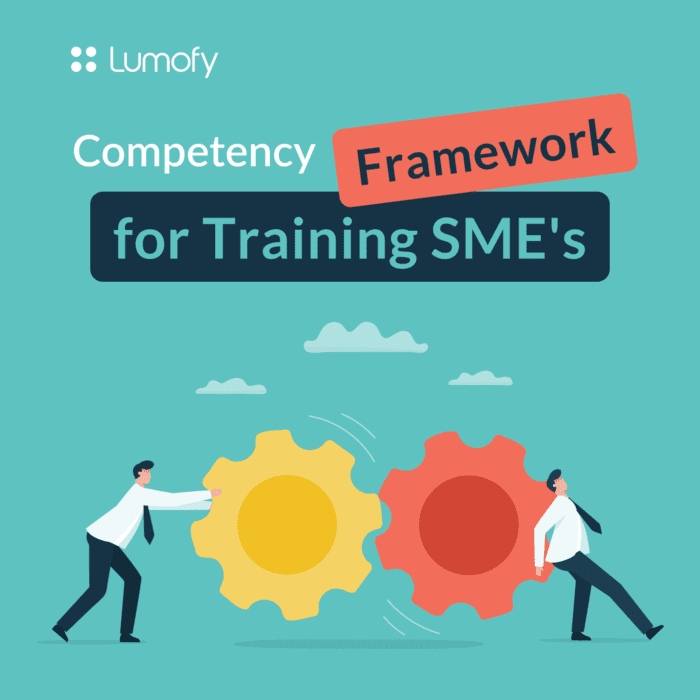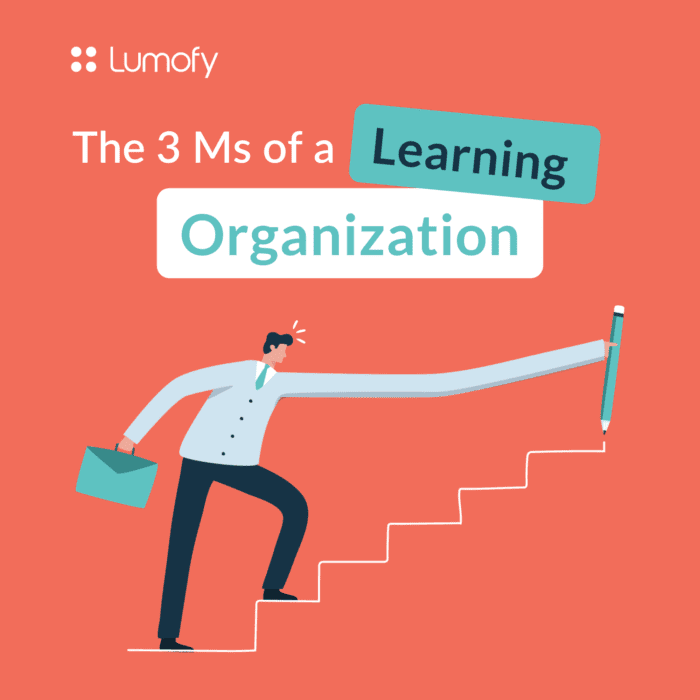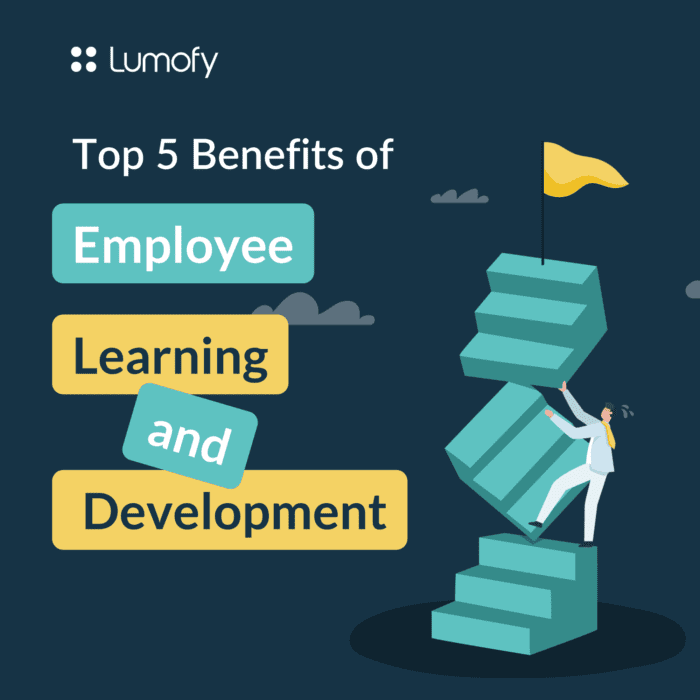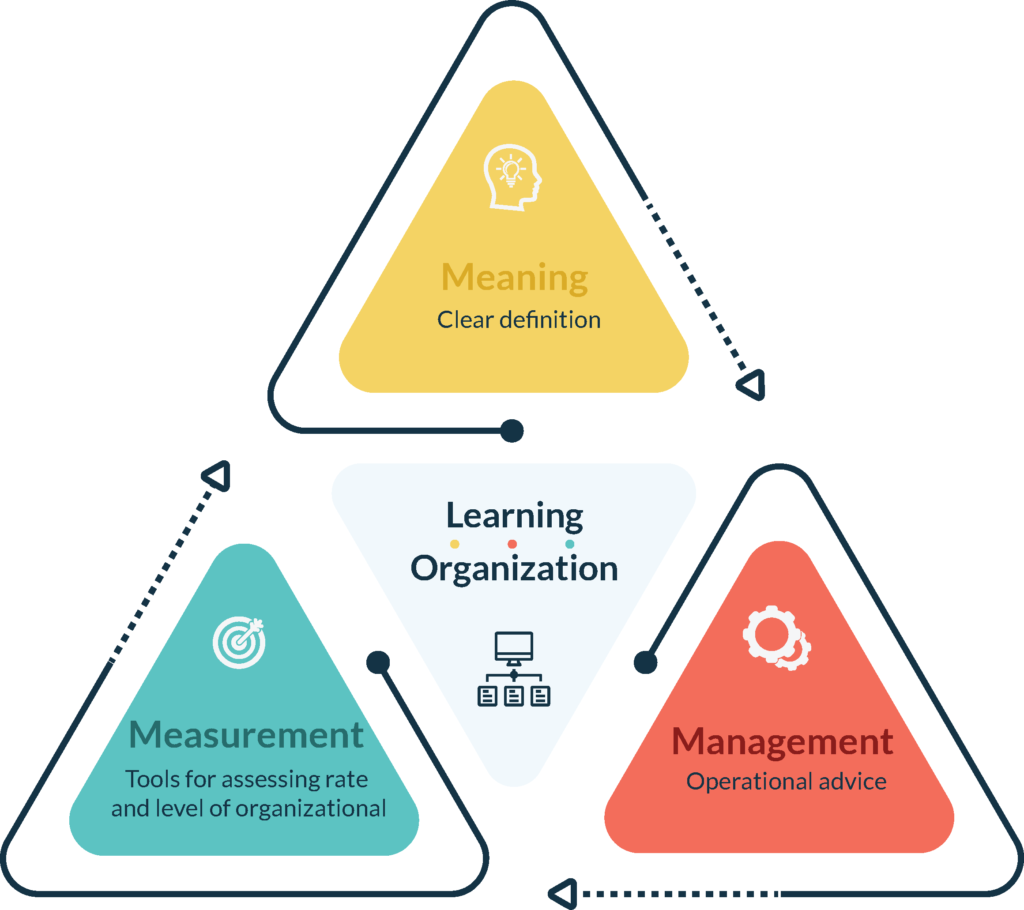Learning culture is a strategic need that most learning organizations aspire to create and maintain. It encourages and empowers the workforce to learn new skills that help them face the challenges in their roles. The same skillset helps them adapt to the evolving changes in their respective industries. The link between learning culture and continuous improvement in any organization is evident. Therefore, it requires constant cultivation, initiatives to gradually engage learners, and a learning platform that’s available wherever and whenever employees need it.
What Are the 3 Ms of a Learning Organization?
Meaning, Management, and Measurement are the foundation for a learning culture that any organization needs to create. They are critical metrics to measure the progress of transforming your organization into a “learning organization” and an effective trigger for development and implementation.
These three levers are interconnected and overlapped on many levels. With accrued time, carefully cultivated attitudes and commitments, including management procedures will eventually provide a solid foundation for building a “learning organization”. Such an organization can face intensifying competition, technology disruption, and talent demand/supply preferences.
1. Meaning
Meaning is discerning the concept of a learning organization. It involves defining the steps and/or applicable practices that organizations need to implement to create the organization of the future. Meaning requires clearer guidelines for implementation, accompanied by experiential advice rather than high aspirations. Additionally, they will require tools that will help to assess the volume of their organizational learning culture and its effectiveness.
2. Management
Management has the maximum influence on learning experiences, by leading and forming behaviors that reinforce learning. One way to reinforce learning is establishing an open and supportive environment that stimulates the exchange of ideas. Organizations can also signal the importance of spending time on identifying challenges, knowledge transfer, and reflecting on each experiment. These are some approaches that will help organizations create and execute a robust learning process and practice. Additionally, it advocates a subtle shift in their agenda towards a commitment to learning rather than continuous improvement.
3. Measurement
As organizations aspire to such transition, the maxim “if you can’t measure it, you can’t manage it” hold. Measurement deliberately assesses how learning experiences or cycles are integrated and could be translated to improved performance. There are various reinvented metrics to measure post-learning changes. However, it is traceable through three overlapping stages. Cognitive, behavioral, and improved performance. Exposure to new ideas will eventually expand knowledge and organizations will begin to think differently. This will lead to adopting new insights and altering behavior traits accordingly. Thus, these changes will lead to measurable results that your organization is targeting, whether it’s an increase in market share, optimized delivery, or enhanced quality. All of these will require constant learning culture audits to ensure that learning is serving the organization’s needs.
At Lumofy, we believe that the demands of the workplace will continue to change. This change makes it imperative for organizations to constantly refresh their workforce skills. However, the transition will not happen easily and rapidly. It requires a thorough examination and analysis of how to embed a “learning organization” mantra. Then, build a step-by-step plan to enable it using your understanding of the “three Ms”. The efforts will eliminate the barriers that impede your organization’s progress and gradually transform it into a learning organization.

















